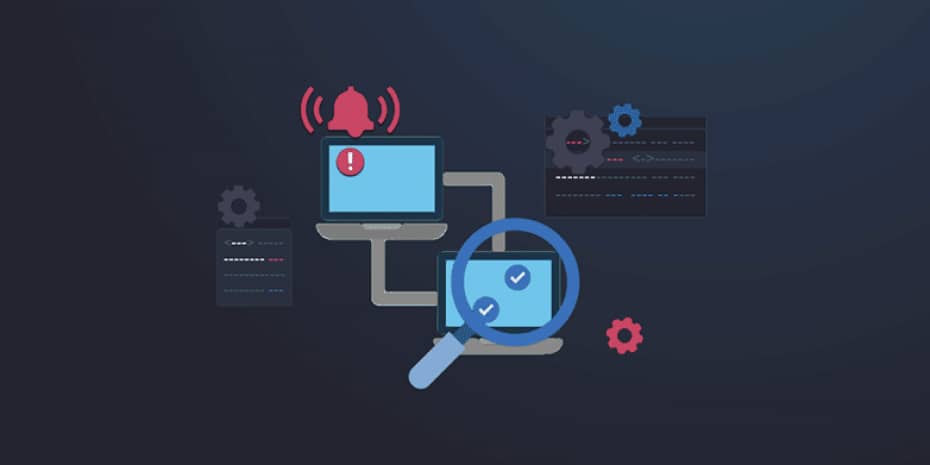Key Points
- WSUS: Free, on-prem tool for Windows patching; lacks automation and discovery.
- SCCM: Builds on WSUS with automation, reporting, and broader endpoint management.
- WSUS Deprecation: WSUS is being phased out; both tools are legacy and on-premise.
- Modern Alternatives: Cloud-based, cross-platform solutions (e.g., NinjaOne) offer better scalability and automation.
There are a variety of modern and legacy technology solutions that businesses can use in their IT environments. WSUS and SCCM are two different legacy products by Microsoft that are used for IT management. They each have unique capabilities that serve endpoints and ensure optimal conditions.
Read on to learn more about the roles of SCCM vs WSUS in an IT environment.
What is WSUS?
WSUS stands for Windows Server Update Services. It is a free, default role that can be installed on the Windows Server Operating system.
The purpose of WSUS is to distribute patches and updates to endpoints. It uses push-style patching to place these on devices with only Windows OS and Microsoft software, so any available patches are initiated by the server and deployed to the endpoints.
There is no way for WSUS to determine whether the endpoints require or are missing any particular patches. The IT admin is responsible for determining which patches are deployed to the endpoints. WSUS allows you to choose what gets updated and when it receives the update.
WSUS previously required an on-premises server and network, necessitating ongoing service and maintenance. While it can still be deployed on Microsoft Azure, Microsoft recommends transitioning to modern cloud-based update management tools.
The deprecation of WSUS
Windows Server Update Services (WSUS) is being deprecated. This means that while WSUS will continue to work, no new capabilities will be added. Microsoft will also stop accepting further feature requests for the product.
Despite its deprecation, WSUS will continue to function with current capabilities preserved, and updates will still be published through the WSUS channel. While Microsoft hasn’t provided a specific timeline for complete removal, it’s clear that WSUS is being phased out starting with Windows Server 2025. Organizations should plan for its eventual retirement.
What is SCCM?
System Center Configuration Manager (SCCM is a Windows product used for endpoint management.
Like WSUS, it is built into Windows server and is free to use. SCCM enables effective management of endpoints within the organization. This is accomplished through features such as OS deployment, endpoint discovery, and reporting.
SCCM extends the value of WSUS. SCCM sits on top of WSUS to enable the management of devices, while WSUS is on the base and is used for patching devices. SCCM adds automation, reporting, basic macOS software deployment, and more.
Similar to WSUS, SCCM can also be cloud-hosted with Microsoft Azure.
Keep your Windows endpoints updated with NinjaOne’s patch management software.
SCCM vs WSUS
When choosing whether to use the WSUS or take advantage of the additional features SCCM offers, think about your organization’s needs within its IT environment.
Below is a list of the main features to consider when considering SCCM vs WSUS:
WSUS
- Requires on-premises server and network
- Ongoing server configuration and maintenance
- Windows OS & Microsoft Application Patching
- Push-style patching
- Software deployment
SCCM
- Requires on-premises server and network
- Ongoing server configuration and maintenance
- Off-network management (cloud-hosted by Azure)
- Windows OS & 3rd party patching
- Mac OS patching (via addons)
- IT asset inventory
- Software deployment
- System health and performance monitoring
- Remote control
How to choose between SCCM vs WSUS
SCCM and WSUS are older on-premise tools that fulfill different tasks, but they can still provide a valuable solution for legacy systems when used together.
WSUS remains functional for basic Windows patching and is still a viable option for basic Windows management, especially for organizations that don’t require SCCM’s full capabilities.
Meanwhile, SCCM is a more comprehensive solution, offering a range of features such as remote device control, active monitoring, endpoint management, software distribution, OS deployment, and more. However, it’s important to note that SCCM no longer receives feature updates. It has been replaced by Configuration Manager (MECM), which continues to receive updates and improvements.
As WSUS reaches its end of life, it is vital to evaluate alternative options, such as a robust endpoint management solution that can offer enhanced security, automated workflows, and comprehensive device management capabilities.
Improve your Windows patching process with G2’s #1 patch management software.
IT management with NinjaOne
Vanson Bourne found that 9 out of 10 decision makers in the IT space feel that legacy solutions are preventing their business from growing and reaching its potential. SCCM and WSUS are both considered legacy products, which means they might not allow for as much growth in your business.
NinjaOne is a modern IT management solution that is 100% cloud-based. It provides patch management that utilizes pull-patching, which enables more control and granularity with individual device patches. Endpoint management is another available NinjaOne product that enables straightforward and intuitive management of all your devices.
These products and more are all available to use from a single pane of glass. Sign up for a free trial today.








